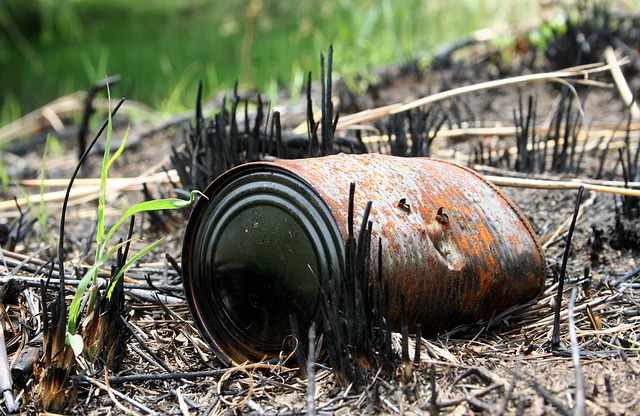JP Morgan analysts double LA wildfire insurance loss estimate to ~$20bn

Equity analysts from investment bank JP Morgan have now doubled their earlier loss estimate for still raging Los Angeles region of California wildfires, now suggesting it could even exceed $20 billion.
At that level this would become the most expensive wildfire outbreak ever for the insurance and reinsurance market and at such a high cost there would definitely be ramifications for a number of exposed insurance-linked securities (ILS) positions.
While the wildfires continue to rage, reports continue to suggest the number of structures destroyed or badly damaged could be as high as 2,000, although this figure could rise.
With wildfires still burning without containment and winds expected to pick up again through Thursday, the outlook for further damage in Los Angeles appears significant still.
We reported this morning that a number of analyst reports had pegged the potential insurance industry loss from the LA wildfires at somewhere between $6 billion and $13 billion.
Within that group, the JP Morgan analysts had preliminarily estimated $8 billion of insured losses from the fires.
But now, with economic loss estimates having doubled and reports suggesting damage is much more extensive, the analyst team from the bank have lifted their industry loss estimate.
The JPM analyst team explained their reasoning, “Expectations of economic losses stemming from the fires have more than doubled since yesterday to closer to $50 billion, and we estimate that insured losses from the event could exceed $20 billion (and even more if the fires are not controlled).
“This would make this event significantly more severe than the 2018 Butte County Camp fires, the highest insured loss wildfires in California’s history previously (with insured losses of roughly $10 billion). Insured losses in the Butte Camp fire were close to two-thirds of economic losses (about $15 billion). That event impacted over 150,000 acres and affected over 18,000 houses/buildings.
“While the current wildfires haven’t affected as much acreage or as many houses/buildings (thus far), more of the damage is concentrated in the affluent Pacific Palisades area, which has high value residential homes (median home price >$3 million versus <$500k in Butte County). Moreover, the fires have not been contained thus far and continue to spread, implying that estimates of potential economic and insured losses are likely to increase.”
We are still a long way off any loss estimates based on actual damage information, given the still-unfolding disaster situation in Los Angeles County.
So it’s hard to tell how high the total insurance market loss from these fires will rise, but it is certain to be well into the billions, it seems, based on all the estimates seen to-date.
At levels above $10 billion there would be expected to be more impacts and losses to reinsurance capital, which could include some private ILS arrangements, collateralized reinsurance and retrocession, especially for any lower-layers that feature ILS market participation.
For the catastrophe bond market, the main threat continues to be aggregate deductible erosion, it seems, which was highlighted yesterday by manager Icosa Investments.
In the cat bond market, wildfire risks are most typically featured within multi-peril deals, many of which are annual aggregate in nature.
However, there is one dedicated California wildfire cat bond, the latest in the Randolph Re series that have been issued to support insurer Mercury’s reinsurance needs.
It’s a relatively small and privately placed transaction, that provides Mercury $45.5 million of collateralized reinsurance against wildfire losses in California, we understand.
Larger insurers such as Liberty Mutual, Allstate, Progressive, American Family, USAA, Farmers, and Nationwide Mutual, all have in-force multi-peril cat bonds with some wildfire exposure, some of which includes coverage in California we believe.
However, as we said and Icosa Investments highlighted, the main threat to cat bonds (aside perhaps from the Randolph Re private deal), would seem to be from aggregate deductible erosion due to this specific event.
The main threat for ILS investors would likely be from private and collateralized deals in the lower-layers of any affected reinsurance towers, we suspect.
JP Morgan’s analysts also said, “We expect primary insurers to incur a greater proportion of losses compared to reinsurers than for similar severity events in the past, driven by the increase in reinsurance attachment points and limited availability of aggregate covers since 2023.”
Also just now, Jasper Cooper, Vice President-Senior Credit Officer, Moody’s Ratings has said, “The wildfires in the Los Angeles region have caused tragic loss of life and widespread destruction of property. We would expect insured losses to run in the billions of dollars given the high value of homes and businesses in the impacted areas. Losses will be shared among standard homeowners insurers, insurers specializing in high-value E&S homeowners policies, and the California FAIR plan. In addition, commercial property losses could be significant.”
As we said, it’s far too early for an accurate picture of the insurance and potentially reinsurance market losses from this ongoing catastrophe event. While the JP Morgan updated estimate may prove to be on the higher-side, we won’t know for certain until the fires are brought under greater control and damage assessment begins.
Also read:
– LA wildfires: Analysts put insured losses in $6bn – $13bn range. Economic loss said $52bn+.
– LA wildfires bring aggregate cat bond attachment erosion into focus: Icosa Investments.






